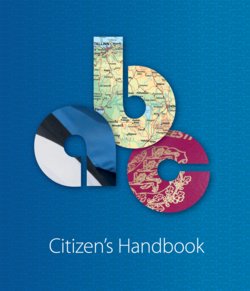Читать книгу Citizen’s Handbook - Mart Jagomägi - Страница 7
На сайте Литреса книга снята с продажи.
ADMINISTRATIVE DIVISION
ОглавлениеThe administrative division of the territory of Estonia is provided by the Territory of Estonia Administrative Division Act.
The administrative division of the Republic of Estonia is based on counties, rural municipalities, and cities.
• State administration in counties is carried out by the county governors and government agencies pursuant to law.
• Local government administration in rural municipalities and cities is carried out on the bases provided for in the Local Government Organisation Act.
• Rural municipality districts or city districts may be formed in a rural municipality or city, respectively, pursuant to the procedure provided by law.
As at 30 January 2013, there are 15 counties and 226 local governments: 33 cities (plus 14 cities without municipal status) and 193 rural municipalities.
Cities in Estonia (cities without municipal status are indicated by an asterisk):
Abja-Paluoja*, Antsla*, Elva, Haapsalu, Jõgeva, Jõhvi*, Kallaste, Karksi-Nuia*, Kehra*, Keila, Kilingi-Nõmme*, Kiviõli, Kohtla-Järve, Kunda, Kuressaare, Kärdla, Lihula*, Loksa, Maardu, Mustvee, Mõisaküla, Narva, Narva-Jõesuu, Otepää*, Paide, Paldiski, Põltsamaa, Põlva, Pärnu, Püssi, Rakvere, Rapla*, Räpina*, Saue, Sillamäe, Sindi, Suure-Jaani*, Tallinn, Tamsalu*, Tapa*, Tartu, Tõrva, Türi*, Valga, Viljandi, Võhma, Võru.
Estonia is politically a unitary state (as opposed to federations or federal states). This means that there are no independent units inside of the Estonian state that could pass their own laws.
